Read Our Blogs
Appalachian Mourning Artifacts from the Victorian Era
Here at the Southwest Virginia Museum Historical State Park, we like to offer special themed tours or talks about our collection of Appalachian artifacts. One of the recent collections of artifacts we featured is connected to death and mourning in Appalachia. We want to take this opportunity to share some of the interesting stories behind the artifacts in our care with you, as we delve into our collections.
We have a number of items that reflect how people in the area expressed mourning during the Victorian period (roughly 1840-1900, the period of Queen Victoria’s reign in Great Britain). Victoria’s beloved husband Albert died in 1861, plunging her and the country into a prolonged period of mourning and creating several mourning traditions that soon spread to the United States. The museum artifacts show that common customs elsewhere were also followed here in rural Virginia.
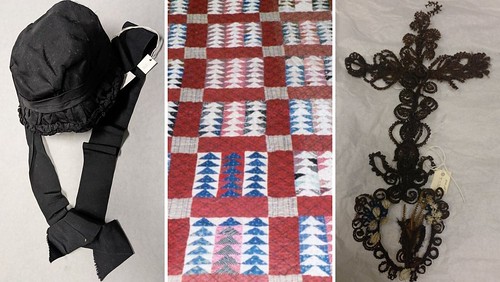
The most singular items we have related to mourning are our hair art pieces. When a loved one died, especially a child, families often kept the hair as a keepsake. Sometimes just a few strands were kept in a locket or in a wallet; this small wreath handstitched to a piece of cardboard was found in the wallet of Valentine Miller (1816-1883) from Russell County, Virginia.
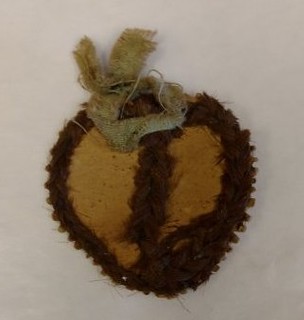
Other times the family might create an elaborate piece of hair art, like this cross and wreath made by Anna Priscilla Honaker Miller (1840-1916). We don’t know whose hair she used, but records show that she lost four children before she died; perhaps this was her way of forever keeping them in her heart.

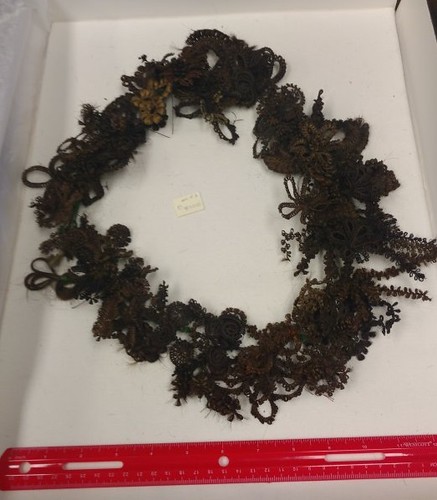
These hair art pieces were used in rememberance of those who were lost. They could be formed artistically into many shapes and sizes.
Keeping the hair of a deceased loved one wasn't the only way Victorians memorialized those who had died. Another not uncommon practice was to take photos of recently dead family members in lifelike poses as keepsakes. If a child died, families occasionally would have a photograph taken of the child either alone or as part of a family portrait, propped up. Another tradition was to have a photograph taken of someone holding a photo of someone who had died. The museum owns a small cased daguerreotype of a somber woman in which a portrait of a young man has been inserted into the casing. We don’t know who the people are, but it’s clear that someone wanted to depict the two as part of a unit.
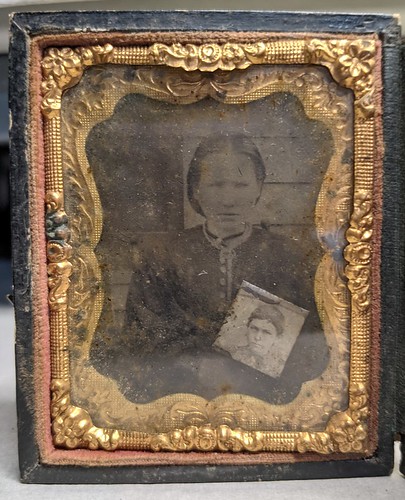
Also in the collection is a set of mourning clothes, including a bonnet, dress, purse and jacket, which belonged to Sarah Jane Young Fugate (1829-1919). She may have worn these after the death of her husband Rufus, who died in 1903. It was customary for a widow to wear black from anywhere for a few months to up to two years. The purple buttons and accents on the jacket were allowable after the initial period of deep mourning had passed.
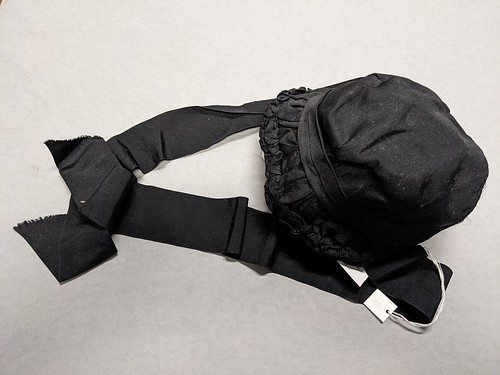
This bonnet would have been worn to show someone in mourning.
Speaking of mourning clothes, we have at least two quilts in the collection that we know incorporate pieces of mourning clothes in their pattern. The Flying Geese quilt, dating from 1900, and the Log Cabin pattern from the 1920s, include strips of black fabric from mourning clothing. This use of the old clothing was another way to remember the deceased through an item that was used every day.
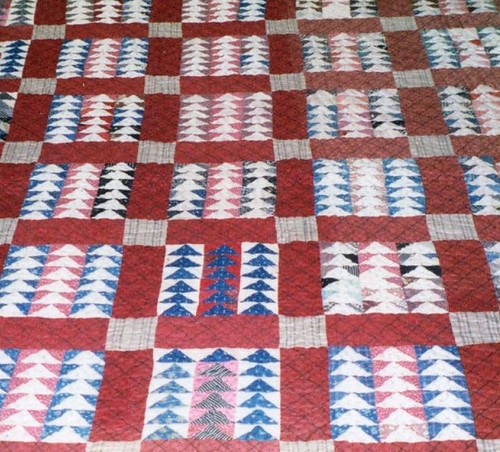
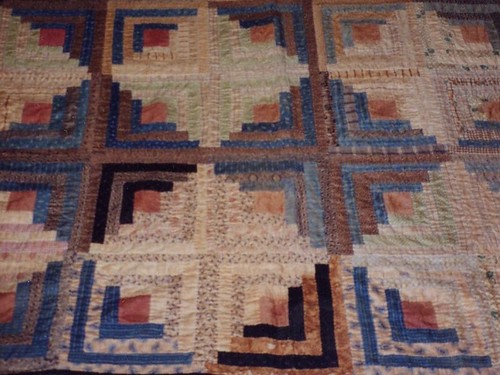
People today still use quilts as a way of mourning and honoring those who have passed. These quilts pictured here would use pieces of clothing from those who had passed to create beautiful patterned quilts.
Funerals were a major affair, especially for the more well-to-do members of the community. An invoice for the funeral of Belle Slemp Edmonds (1874-1910) included charges for a silk-lined black casket with silver handles, a silk robe and a wreath of roses, as well as charges for embalming and hearse.

The death of Belle Graves was announced on an engraved, black-edged card, a Victorian practice that continues in some areas today. Although many of these practices are no longer popular, some, like wearing black at a funeral, are still with us today.
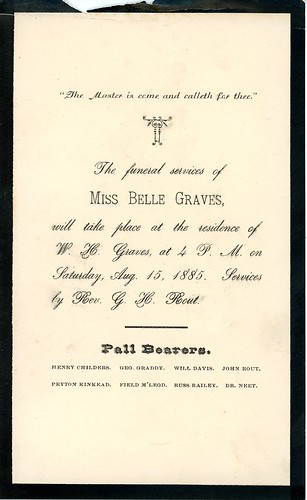
Visit today to see more artifacts in person!
We welcome you to visit the Southwest Virginia Museum Historical State Park to see more artifacts and hear more stories from our collection of more than 60,000 pieces and state of the art exhibits.
If you have read the article and have a question, please email nancy.heltman@dcr.virginia.gov.
Search for blogs
By Park
Categories
Cabins
Camping
Fishing
History and Culture
Other
Programs and Events
Trails
Volunteers
Water Fun
Archive
2026
2025
2024
2023
2022
2021
2020
2019
2018
2017
2016
2015
2014
2012













